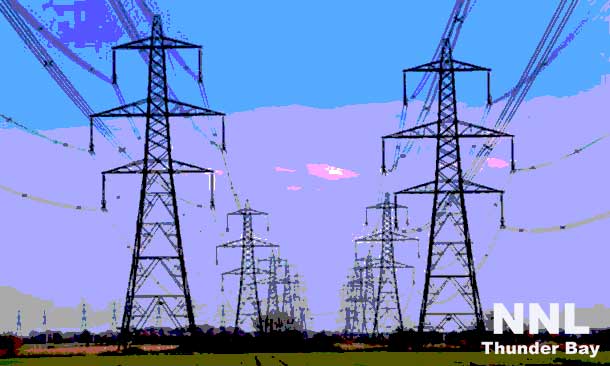

NEW YORK – Prices for gasoline have hit major highs. The reason is the increasing price of a barrel of crude oil.
Oil price hits a 28-month high last week due to expectations on the OPEC/non-OPEC output-cut agreement and concerns about the political tensions in Saudi Arabia. Last week, Brent Crude future for January 2018 delivery rose to $64.65 a barrel, or the highest since June 2015, while the West Texas Intermediate Crude future for December 2017 delivery rose to $58.44, and also the highest since July 2015. Abhishek Kumar, Senior Energy Analyst at Interfax Energy’s Global Gas Analytics in London said in a Reuters report: “The move is driven by developments in Saudi Arabia in recent days and anticipation that the consolidation of power by King Salman and the Crown Price will continue.” Renaissance Oil Corp. (OTC: RNSFF), W&T Offshore, Inc. (NYSE: WTI), Sanchez Energy Corp (NYSE: SN), Chesapeake Energy Corporation (NYSE: CHK), Denbury Resources Inc. (NYSE: DNR)
Expectations that the Organization of the Petroleum Exporting Countries and Russia will extend its cut in oil production boosted the oil price. The next OPEC meeting is scheduled on November 30 and analysts expected the major exporters will extend output cut beyond March 2018. According to Reuters, Saudi Arabia plans to cut oil output by 120,000 barrels per day in December from November. “Growing confidence in the market that the upcoming OPEC meeting will result in an extension to the output-cut agreement is also supporting prices,” Abhishek Kumar said.
Renaissance Oil Corp. (OTCQB: RNSFF) is also listed on the TSX Venture Exchange under the ticker symbol ‘ROE’. The company just earlier today announced breaking news that it, “is pleased to announce, in conjunction with its partner Lukoil, the Company has completed the fourth workover at the Amatitlán block in Veracruz, Mexico:
-Performed an organic solvent clean out of existing well perforations and a high stimulation recompletion of a lower Chicontepec interval;
-The well initially flowed back over 750 bbls/d of stimulation fluid and crude oil (up to 40% oil cut), and 0.5 MMcf/d gas at 1,100 psi wellhead pressures;
-The well was flow tested for several days recovering over 1,000 bbls of stimulation fluid as well as light oil and gas in varying volumes and rates, with the most recent production observed at approximately 60 bbls/d of light oil;
-Operations are underway to clean out the well and install an artificial lift system to stabilize production;
-Gross costs for the fourth workover are estimated at C$460,000, or under C$8,000 per expected producing barrel; and
-The workover rig will be moved to the fifth location of the six well workover campaign, with expected completion of the campaign by late-November.
Oil production from the first two “minor” workovers remains stable at a combined 50 bbls/d. With the addition of the third and fourth “heavy” workovers, oil production capacity for the Amatitlán block is currently estimated at 170 Bbls/d, once stimulation fluids are recovered.
Renaissance has completed the repair of approximately 30 km of existing community roadways and has built and reconditioned several multi-well pads for drilling and workovers. Drilling rig crews and equipment have received all required certifications and are expected to be moved to the first drilling location in the coming weeks, subject to finalizing drilling permits.
Social Investment Program – Renaissance and Lukoil have initiated a Social Investment Program for the communities within the Amatitlán block. Engineering and infrastructure improvement projects have been defined and are expected to be completed in the next 6-8 months. The C$660,000 budget for the Social Investment Program will be shared by the partners of Amatitlán.”
W&T Offshore, Inc. (NYSE: WTI) reported its third quarter 2017 operational and financial results. Revenues were $110.3 million, up $2.9 million, or 3% compared to the third quarter of 2016. Oil and NGLs sales made up 77% of revenues in the third quarter of 2017 compared to 72% in the third quarter of 2016. Tracy W. Krohn, W&T Offshore’s Chairman and Chief Executive Officer, stated, “We continue to have great success with the drill bit and are still at a 100% success rate in 2017, which is identical to the last few years at 100%. Through the end of October 2017, we have drilled four successful wells this year and expect more to come. We are in the process of completing the Ship Shoal 300 B-5 ST well, a field extension well in our highly successful SS300 field, which encountered 172 feet of net stacked pay.”
Sanchez Energy Corp (NYSE: SN) is an independent exploration and production company focused on the acquisition and development of U.S. onshore unconventional oil and natural gas resources, with a current focus on the Eagle Ford Shale in South Texas. Recently the company announced operating results for the third quarter 2017. According to the report production totaled approximately 6.8 million barrels of oil equivalent, or 73,783 barrels of oil equivalent per day, which represents an increase of 43 percent over third quarter 2016 production and is at the high end of the Company’s guidance for the third quarter 2017 despite unprecedented levels of rainfall and flooding along the Gulf Coast and in South Texas associated with Hurricane Harvey and subsequent localized storms.
Chesapeake Energy Corporation (NYSE: CHK) reported recently average daily production for the 2017 third quarter of approximately 541,600 barrels of oil equivalent (boe) increased by 4% sequentially, adjusted for asset sales. Doug Lawler, Chesapeake’s Chief Executive Officer, commented, “We have recognized greater productivity across our diverse portfolio through technical innovation and the tenacity of our employees and, accordingly, we are expanding our core position in every operated play. On October 30, 2017, total production reached 584,000 boe per day, including 99,000 barrels of oil and we remain on track to average 100,000 barrels of oil per day in the fourth quarter.”
Denbury Resources Inc. (NYSE: DNR) earlier in September announced that over the last several days, production has been restarted at five of its six fields impacted by Tropical Storm Harvey. As of today, the Company estimates that approximately 90% of the 16,000 barrels of oil equivalent (“BOE”) per day of net production shut-in as of August 27 has been returned to production, and the Company has not identified any significant damage at these impacted fields. The only field that remains shut-in is Thompson Field, which had net production just prior to the storm of approximately 1,000 BOE per day. Production at Thompson Field is expected to return to full capacity over the next eight weeks, as flooding in that area subsides and personnel are able to access the field.






